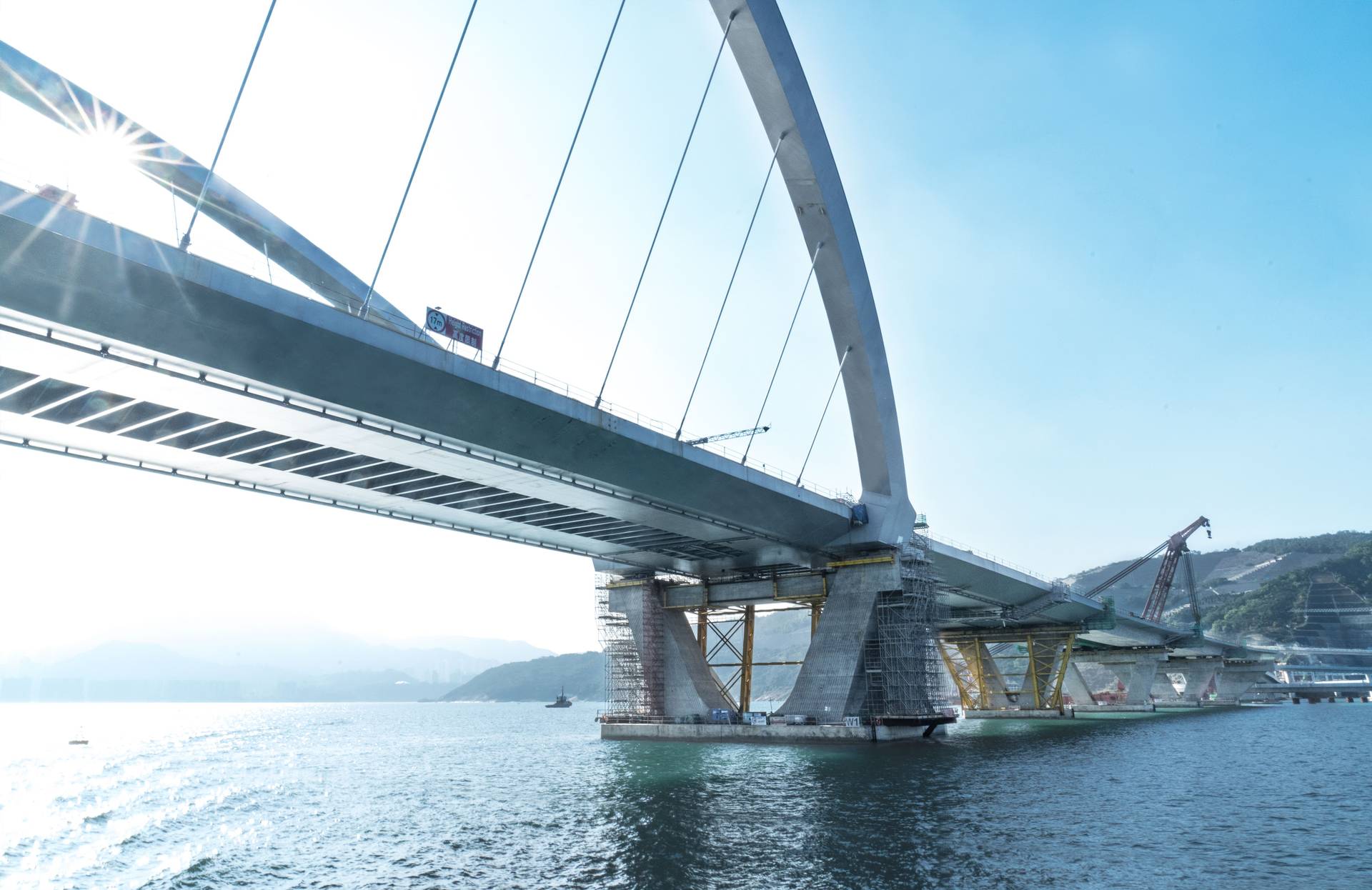
ScopeX: leading the way in building and infrastructure project decarbonization
A programmatic approach to embedding low carbon solutions.

Globally, the built environment accounts for nearly 40 percent of greenhouse gas (GHG) emissions — stemming from both construction and operations. Mitigating climate change will depend on how we choose to build in the future. As a leading infrastructure consulting firm, we have a significant opportunity — and responsibility — to act. Through our work with clients, we can make a direct impact on the sustainability of the built environment for decades to come. That’s led us to think boldly about decarbonization.
Over the last several years, we’ve worked hard to develop a holistic and integrated carbon management system that is industry leading. This system leverages our technical expertise and our enterprise-wide commitment to partnering with our clients to embed low-carbon practices into all we do.
A global approach
Our ScopeX™ approach is a global program of best practices supporting the management of whole life carbon in building and infrastructure projects, and includes:
- Programmatically collaborating with our clients and partners to include carbon management and decarbonization services early in scope discussions.
- Deploying methods and technology tools on all our major projects to achieve the lowest embodied and operational emissions possible.
- Upskilling our people and supply chain partners on carbon management and net zero principles.
We recently implemented an organizational decarbonization policy, which sets out our vision, principles and commitments for reducing emissions from our projects as an extension of our corporate net zero commitments. The policy applies to our entire global business and covers the project lifecycle, from planning and design to construction and operation. The policy also aligns with the United Nations Sustainable Development Goals, the Paris Agreement and the Science Based Targets initiative, and supports our clients in achieving their own decarbonization goals.
The policy is backed by a global program of best practices supporting the management of whole life carbon in building and infrastructure projects. This innovative program outlines the approach to reducing whole life carbon for our projects. It includes principles and leadership commitments as well as globally relevant project specific guidance to reduce GHG emissions through design decisions and material choices.
Decarbonization enablers
A key part of our system is our ScopeX Portal: an internal digital hub for decarbonization strategies, project data and carbon assessment results. Through the portal, we leverage project data to develop evidence-based decarbonization strategies for clients; collect and aggregate project data by client, project type, market or region, and enable decarbonization strategies through AI-curated and asset-specific typical interventions.
We have bespoke sustainability and carbon assessment tools that integrate with our design software and allow our teams to quickly and easily estimate the carbon impact of different design options and scenarios. One of those tools is a decarbonization tracker. In addition to being a carbon management plan template, the tool provides discipline-specific opportunities for decarbonization in one consolidated place and ensures consistent documentation and tracking for every project.
Examples of opportunities to reduce carbon across the asset lifecycle:
Advisory and planning
- Evaluate existing building vs new build
- Minimize the footprint of the new build
- Incorporate carbon in selection criteria development
Construction management
- Work with low carbon suppliers
- Leverage low carbon construction methods, including low and no emissions equipment
Design
- Reuse and rehabilitate existing materials
- Eliminate unnecessary structure over-build and reduce materials quantities by incorporating design efficiency
- Recommend lower carbon design options
- Specify low carbon construction methods
Operation and maintenance
- Implement energy efficiency measures
- Monitor and optimize energy efficiency measures throughout the project
- Continuously review and implement carbon reduction opportunities
From opportunities to outcomes
ScopeX allows us to think bigger than a single project: the approach can help our clients plan long-term and implement solutions across many distinct assets. In Hong Kong, for instance, our team prioritized low-carbon practices on the 1.3-kilometer Cross Bay Link (CBL) bridge — delivering an exceptionally resilient and sustainable structure.
Design solutions included Grade S690QL high-strength structural steel, which reduced embodied impacts, as well as prefabrication techniques that limited construction waste. The result is a bridge with 20 percent less embodied emissions than conventional steel construction and a structure capable of withstanding 320-kilometer-per-hour winds.
Our recent work with the Greater Toronto Airport Authority (GTAA) brought many solutions to bear on their long-term environmental action plan for Toronto Pearson International Airport — one of North America’s key aviation hubs.
The plan for Pearson focused on several key areas: climate change, carbon neutrality and emissions, strategic energy use, water management, natural environment, and waste management. Our team is developing strategic plans for each.
Leveraging our ScopeX approach, we evaluated various materials and methods — assessing their ability to reduce energy use, draw on renewable energy sources and reduce the overall carbon impact.
Solutions included lighting systems, clean heat energy services at its central utility plant, and deployment of on-site solar photovoltaic and electric vehicle charging. Altogether, the work will play a critical role in helping GTAA achieve the stated sustainability goals within their 2021 Environmental Policy.
Influencing decarbonization at the system level
Decarbonization has become central to the work we deliver. Thanks to new policies, systems, tools and resources, our planning and design teams have the ability to embed low-carbon solutions across our global portfolio of projects.
Our goal is to make innovation in decarbonization integral to every project. Through training and webinars, newsletters and blogs, and awards and recognition programs, we’re raising awareness and sharing knowledge on best practices in low-carbon design and delivery.
As an industry leader in decarbonization, we’re committed to continuously improving and innovating to achieve our decarbonization vision — and invite our clients and partners to join us on this journey to deliver a better and low-carbon world.
Read more about how we are delivering a better world for our clients and the communities we serve in our recently published 2024 Sustainability Report.
Author Bio Ida Namur is a certified environmental professional who specializes in sustainability consulting and global program implementation. Her 20+ years of experience in the professional services industry includes sustainability, international development, environmental impact assessments and program management for private sector companies and government agencies. In her current role, she leads the development and implementation of ScopeX, AECOM's approach to decarbonizing the projects we deliver for our clients.